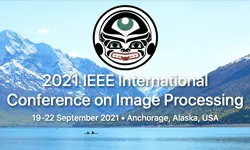Edge-Resolved Transient Imaging: Performance Analyses, Optimizations, And Simulations
Charles Saunders, William Krska, Juli?n Tachella, Sheila Seidel, Joshua Rapp, John Murray-Bruce, Yoann Altmann, Stephen McLaughlin, Vivek Goyal
-
Members: FreeSPS
IEEE Members: $11.00
Non-members: $15.00Length: 00:08:59
22 Sep 2021
Edge-resolved transient imaging (ERTI) is a method for non-line-of-sight imaging that combines the use of direct time of flight for measuring distances with the azimuthal angular resolution afforded by a vertical edge occluder. Recently conceived and demonstrated for the first time, no performance analyses or optimizations of ERTI have appeared in published papers. This paper explains how the difficulty of detection of hidden scene objects with ERTI depends on a variety of parameters, including illumination power, acquisition time, ambient light, visible-side reflectivity, hidden-side reflectivity, target range, and target azimuthal angular position. Based on this analysis, optimization of the acquisition process is introduced whereby the illumination dwell times are varied to counteract decreasing signal-to-noise ratio at deeper angles into the hidden volume. Inaccuracy caused by a coaxial approximation is also analyzed and simulated.



